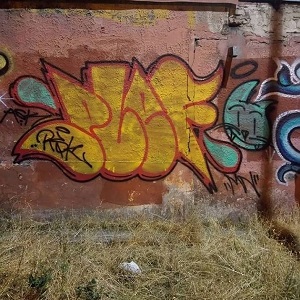
Published 2019-12-11
How to Cite
Abstract
This article presents a theoretical analysis of the concept of media space, which is understood as the result of the interaction between technological networks and the communication structure (producers, audiences, institutions, uses). This discussion is developed on the basis of a critical interpretation of Jürgen Habermas’ concept of liberal public sphere. Subsequently, the article discusses the formation of a plebeian aurality in Peru, the result of the technification of Indigenous music in the context of mass-migration. Taking as a case study the work of the writer and anthropologist José María Arguedas with said music, his intellectual practices are examined as a political intervention in the new media space, aimed at recomposing the nation's sound landscape.
Downloads
References
APPADURAI, A. (2010). Modernity at Large: Cultural Dimensions of Globalization. Minneapolis: University of Minnesota Press.
ARGUEDAS, J. M. (2006). Yawar fiesta. La Coruña: Ediciones del Viento.
ARGUEDAS, J. M. (1938/2012a). Canto Kechua, con un ensayo sobre la capacidad de creación artística del pueblo indio y mestizo. En: Obra antropológica, vol. 1 (pp. 145-185). Lima: Editorial Horizonte.
ARGUEDAS, J. M. (2012b). De lo mágico a lo popular, del vínculo local al nacional. En: Obra antropológica, vol. 7 (pp. 547-549). Lima: Editorial Horizonte.
ARGUEDAS, J. M. (2012c). En defensa del folklore andino. En: Obra antropológica, vol. 1 (pp. 383-384). Lima: Editorial Horizonte.
ARGUEDAS, J. M. (2012d). Evolución de las comunidades indígenas: El Valle del Mantaro y la ciudad de Huancayo: un caso de fusión de culturas no perturbadas por la acción de las instituciones de origen colonial. En: Obra antropológica, vol. 4 (pp. 293-355). Lima: Editorial Horizonte.
ARGUEDAS, J. M. (2012e). La difusión de la música folklórica andina: Clasificación de un catálogo de discos. En: Obra antropológica, vol. 7 (pp. 465-483). Lima: Editorial Horizonte.
ARGUEDAS, J. M. (2012f). Los señores y los indios. En: Obra antropológica, vol. 5 (pp. 366-371). Lima: Editorial Horizonte.
ARONI CORONADO, F. [s.f.]. Melodía Andina (disco compacto). Cora Cora: [s.e].
BENJAMIN, W. (1934/2008). The Author as Producer. Trad. E. Jephcott. En: JENNINGS, M.; DOHERTY, B. y LEVIN, Th. (Eds.). The Work of Art in the Age of Its Technological Reproducibility and Other Writings on Media (pp. 79-95). Cambridge: The Belknap Press of Harvard University Press.
BRECHT, B. (2000). Radio as a communications apparatus. Trad. Marc Silberman. En: Silberman, M. (Ed.). Brecht on Film & Radio. Londres: Bloomsbury Methuen.
BORRAS, G. (2012). Lima, el vals y la canción criolla (1900-1936). Lima: IFEA.
BÜRGER, P. (1996). Crítica de la estética idealista. Trad. Ricardo Sánchez Ortiz de Urbina. Madrid: Visor.
CALHOUN, C, (Ed.) (1992). Habermas and the Public Sphere. Cambridge: The MIT Press.
DAMIÁN, M. (2009). Entrevista personal (inédita). Javier García Liendo. Lima.
DENNING, M. (2015). Noise Uprising: The Audiopolitics of a World Musical Revolution. Nueva York: Verso.
ENZENSBERGER, H. M. (1970/1972). Elementos para una teoría de los medios de comunicación. Trad. Michael Faber-Kaiser. Barcelona: Anagrama.
GARCÍA CANCLINI, N. (2001). Culturas híbridas: Estrategias para entrar y salir de la modernidad. Buenos Aires: Paidós.
GARCÍA LIENDO, J. (2017). El intelectual y la cultura de masas: Argumentos latinoamericanos en torno a Ángel Rama y José María Arguedas. Indiana: Purdue University Press.
GUILLORY, J. (2010). Genesis of the Media Concept. Critical Inquiry, 36 (2), 321-362. Recuperado de https://www.journals.uchicago.edu/doi/full/10.1086/648528
GUMBRECHT, H. U. (2005). Producción de presencia: Lo que el significado no puede transmitir. Trad. Aldo Mazzucchelli. Ciudad de México: Universidad Iberoamericana.
HABERMAS, J. (1962/1991). The Structural Transformation of the Public Sphere: An Inquiry into a Category of Bourgeois Society. Trad. T. Burger & F. Lawrence. Cambridge, Mass.: The MIT Press.
HABERMAS, J. (1996). Between Facts and Norms: Contributions to a Discourse Theory of Law and Democracy. Trad. W. Rehg. Massachusetts: The MIT Press.
HABERMAS, J. (1964/2010). The Public Sphere: An Encyclopedia Article (1964). En: GRIPSRUD, J.; MOE, H.; MOLANDER, A. y MURDOCK, G. (Eds.). The Idea of the Public Sphere: A Reader (pp. 114-120). Nueva York: Lexington Books.
INNIS, H. (2008). The Bias of Communication. Toronto: University Press.
LEFEBVRE, H. (1974/2013). La producción del espacio. Trad. E. Martínez Gutiérrez. Madrid: Capitán Swing.
LLORÉNS, J. A. (1983). Música popular en Lima: Criollos y andinos. Lima: Instituto de Estudios Peruanos.
MARTÍN-BARBERO, J. (1987). De los medios a las mediaciones: Comunicación, cultura y hegemonía. Barcelona: Gustavo Gili.
MARX, K. (1867/2005). El Capital. Libro primero: el proceso de producción del capital. Trad. P. Scaron. Ciudad de México: Siglo Veintiuno Editores.
NANCY, J.-L. (2015). A la escucha. Trad. H. Pons. Buenos Aires: Amorrortu.
NEGT, O. Y KLUGE, A. (1972/2016). Public Sphere and Experience: Toward an Analysis of the Bourgeois and Proletarian Public Sphere. Trad. P. Labanyi et al. Londres: Verso.
OCHOA-GAUTIER, A. M. (2014). Aurality: Listening and Knowledge in Nineteenth-century Colombia. Durham: Duke University Press.
QUIJANO, A. (1980). Lo cholo y el conflicto cultural en el Perú. Dominación y cultura, Lo cholo y el conflicto cultural en el Perú. Lima, Mosca Azul.
RAMOS, J. (2010). Descarga acústica. Papel Máquina, 2 (4), 49-77. Recuperado de http://www.redkatatay.org/sitio/talleres/descarga_acustica.pdf
RAUNIG, G. (2013). La maquínica del arte político. Otras doce tesis sobre la actualización de El autor como productor de Walter Benjamin. Bilbao: Consonni.
REMEDI, G. (1992). Esfera pública popular y transculturadores populares. En: VIDAL, H. (Ed.). Hermenéuticas de lo popular (pp. 125-204). Minneapolis: Institute for the Study of Ideologies and Literature.
REMEDI, G. (1997). Ciudad letrada: Ángel Rama y la espacialización del análisis cultural. En: MORAÑA, M. (Ed.). Ángel Rama y los estudios latinoamericanos (pp. 97-122). Pittsburgh: Instituto Internacional de Literatura Iberoamericana.
ROMERO, J. L. (2014). Latinoamérica: las ciudades y las ideas. Buenos Aires: Siglo Veintiuno Editores.
ROWE, W. (1996). Ensayos arguedianos. Lima: Universidad Nacional Mayor de San Marcos-SUR Casa de Estudios del Socialismo.
SHINER, L. (2001). The Invention of Art: A Cultural History. Chicago: University of Chicago Press.
THOMPSON, E. P. (1963/2012). La formación de la clase obrera en Inglaterra. Trad. Antoni Domènech. Madrid: Capitán Swing.
THOMPSON, J. (1998). Los media y la modernidad: Una teoría de los medios de comunicación. Trad. Jordi Colobrans Delgado. Buenos Aires: Paidós.
